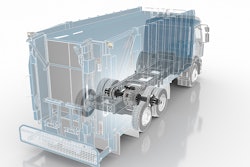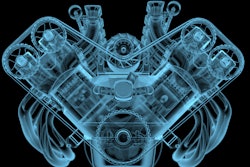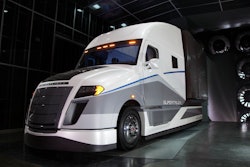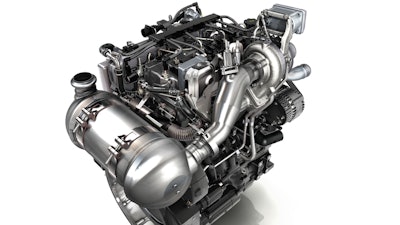
To cap off my month of looking back at some of the top technologies and trends we've covered during my 10 years at OEM Off-Highway, I wanted to look at the top articles we've published during the past decade. By doing so, it not only provides insight into what has been popular with our audience over the years, but also how much our industry has changed and advanced.
1. The First Hydraulic Excavators
Our monthly column contributed by the Historical Construction Equipment Association (HCEA) provides insights into some of the original equipment designs for the off-highway industry. This article continues to be a favorite with readers as it highlights the origins of one of the more common pieces of equipment in the construction industry, the hydraulic excavator.
Hydraulic excavator designs have of course come a long way since the first machines were introduced in the 1800s, but many of the principles utilized—in particular that of hydraulic force—are still in use today.
Read last week's blog for more of our insights on this article.
 An original hydraulic excavator design.Historical Construction Equipment Association
An original hydraulic excavator design.Historical Construction Equipment Association
2. The Unwanted Aftertreatment
For several years, emissions regulations were a key driver for OEMs' development cycles. In the early stages especially there was a lot of development effort and cost associated with determining the right technology to use to reduce emissions.
And in those early days, there was a lot of discussion about how those increased costs might impact customers, as well re-sale of the equipment, which this initial article reviewed. The latter was particularly important for many as used equipment is often sold into other non-regulated parts of the world. The aftertreatment systems used on these early emissions-compliant machines could cause operational issues for the new users of them.
But as regulations evolved and became more stringent—and regulations began to be put in place in various parts of the world including some re-sale markets—manufacturers became more comfortable with their technology and were able to find solutions to the aforementioned issues such as de-tiering kits.
Manufacturers have also continued to enhance their aftertreatment designs to make them more efficient and compact, reducing installation space and cost for OEMs. These improvements have also helped to provide additional benefits for end users such as reduced fuel consumption.
Although there have not been new emissions regulations for the off-highway equipment industry since U.S. Tier 4 Final/EU Stage V, many believe that some of the newer standards for on-highway vehicles such as the EPA's Phase 2 Greenhouse Gas standards, will make their way into the off-highway market. This will necessitate continued development of engines and aftertreatment systems. Keep an eye out for our upcoming article about new emissions reduction technologies under development.
3. COVID-19 and the Heavy Equipment Industry
The global COVID-19 pandemic had a major impact on everyone's lives in some way, shape or form. And this was no different for the heavy equipment industry. Throughout 2020 we kept an eye on how the pandemic was impacting the industry.
One of the most important themes from this article was the way the industry adjusted itself to help the communities in which it operates. Many shifted their manufacturing operations to produce much needed PPE while others made donations to organizations which were provided help to those who needed it most during this time of difficulty.
4. Tractor of the Year 2020 Honors Agricultural Equipment Innovations
Industry awards are often a popular topic with our audience, the annual Tractor of the Year awards being no exception. Through programs like Tractor of the Year, not only are manufacturers recognized for their innovations but the industry also gets a look at some of the latest technology advancements.
Hours of work go into the technology and equipment which is honored with or nominated for these awards. While recognition of this hard work is always welcome, receiving an award like this can also help to verify that designs are on the right track to meet the needs of end use customers, which is typically the ultimate goal.
5. Nox Your Average Sensor
In this article from my early days at the magazine, I had the opportunity to speak with a company about a new sensor technology it had developed to help manufacturers meet emissions regulations. NexTech Materials' NOx sensor is part of the overall SCR system and is used to detect NOx levels.
Though introduced several years ago at this point, the sensor's capabilities—and others like it—are still important today as NOx remains a critical element of emissions reduction efforts.
Articles like this are always interesting as they demonstrate the engineering that goes into even the smallest of components which can help make the biggest of differences.
 The NexTech Materials NOx sensor.NexTech Materials
The NexTech Materials NOx sensor.NexTech Materials
6. Electric Motors for Heavy-Duty Electric Vehicles
Electrification has and continues to be one of the more popular topics in the industries OEM Off-Highway covers. And an integral part of many electric power systems are the electric motors.
Electric motors can be used in a variety of ways in electric vehicles; today many are integrated into axles or other components to help electrically propel a vehicle. As this contributed article from research firm IDTechEx points out, there are also different types of motors available to meet specific application needs.
As electrification continues to progress, so too will electric motor designs.
7. Fulfilling a Need for Hillside Safety
Articles like this can be interesting as a way to see how various types of equipment are designed to meet specific industry challenges. It also shows how various components and design options can come together to benefit end use customers.
Though zero-turn mowers are common in the landscape industry, combining that capability with four-wheel drive brought about new opportunities to improve safety for operators. Finding new ways of using often common technologies is one of the things that always intrigues me about the industries we cover.
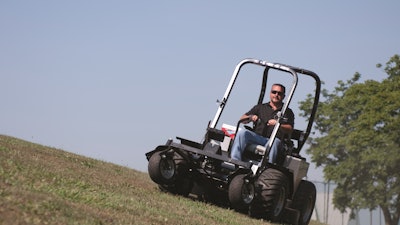 Dixie Chopper combined zero-turn and four-wheel drive capabilities to improve maneuverability on hillsides.Dixie Chopper
Dixie Chopper combined zero-turn and four-wheel drive capabilities to improve maneuverability on hillsides.Dixie Chopper
8. Movement Without Limits
Unique equipment or component designs help to make our industry even more interesting to write about. Vehicle Technologies Inc.'s omni-directional vehicles use specially designed wheels to provide enhanced mobility for various applications. 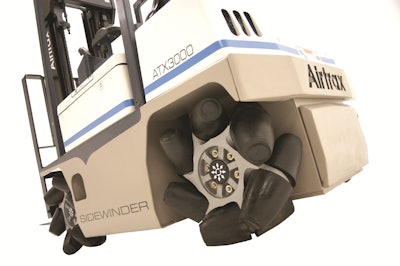 Specially designed wheels enable omni-directional movement.Vehicle Technologies Inc.
Specially designed wheels enable omni-directional movement.Vehicle Technologies Inc.
Again, articles like this demonstrate the many capabilities and innovations in our industry.
9. The Pros and Cons of Industry Consolidation
Mergers and acquisitions are a common occurrence in the heavy equipment industries we cover, and seems to have accelerated a lot more in recent years. And there are many reasons why it is happening—market fluctuations which make it difficult for smaller companies to survive, larger companies wanting to further grow their business or companies coming together to advance technology developments.
Many companies we've spoken to over the years about it have seen the benefits of merging with other companies. Industry expertise can be brought together to enhance product designs or help bring new technology to market. This has especially been the case for companies developing autonomous and electric vehicles.
Whatever the reasons, industry consolidation has certainly changed the landscape of the heavy equipment industries. Whether it has been for the better or worse is yet to be seen. And what further consolidation there could be remains to be seen.
10. Pneumatic Rollers Versus Steel Rollers
Another of our Off-Highway Heroes columns, this article provides insight into the early designs of pneumatic rollers, a technology commonly used in roadbuilding projects.
Like many of the other articles from this column, author Thomas Berry takes us back to the beginnings of this technology by looking at how and why it came about as well as how it has evolved since.
We want to hear from you!
What articles or topics have been your favorite over the past 10 years? What topics do you think we should be covering in the future? Let us know!
And be sure to follow us on social media to stay up to date on news, articles and more highlighting our ever evolving industry.





